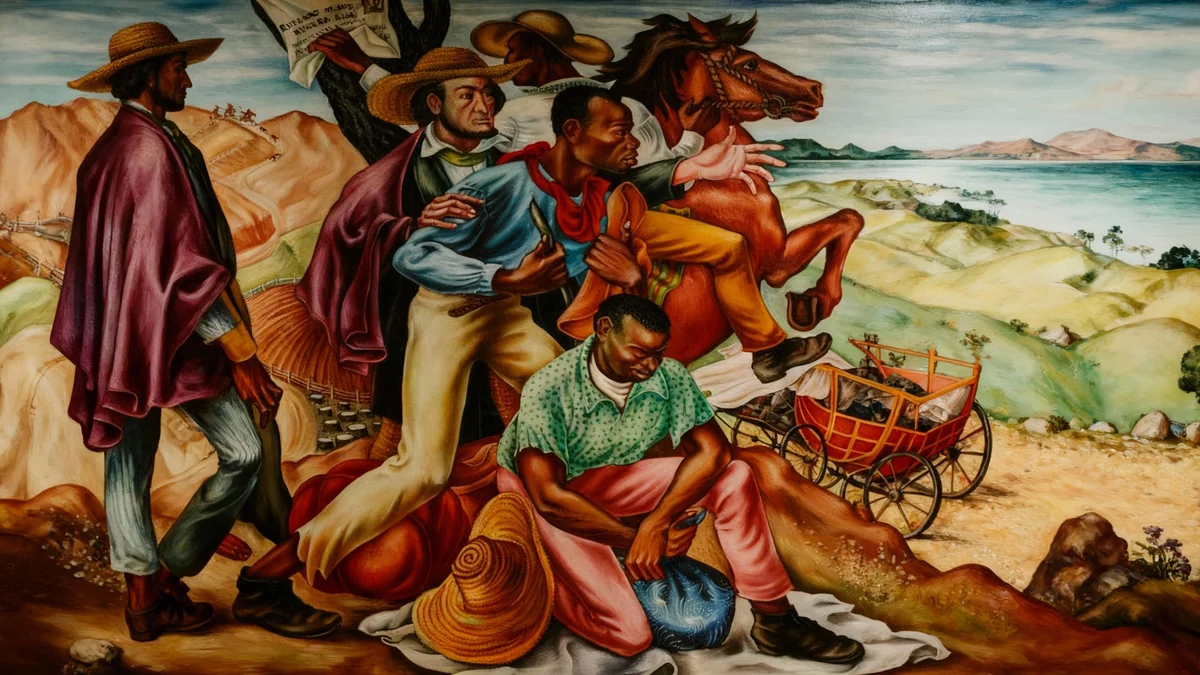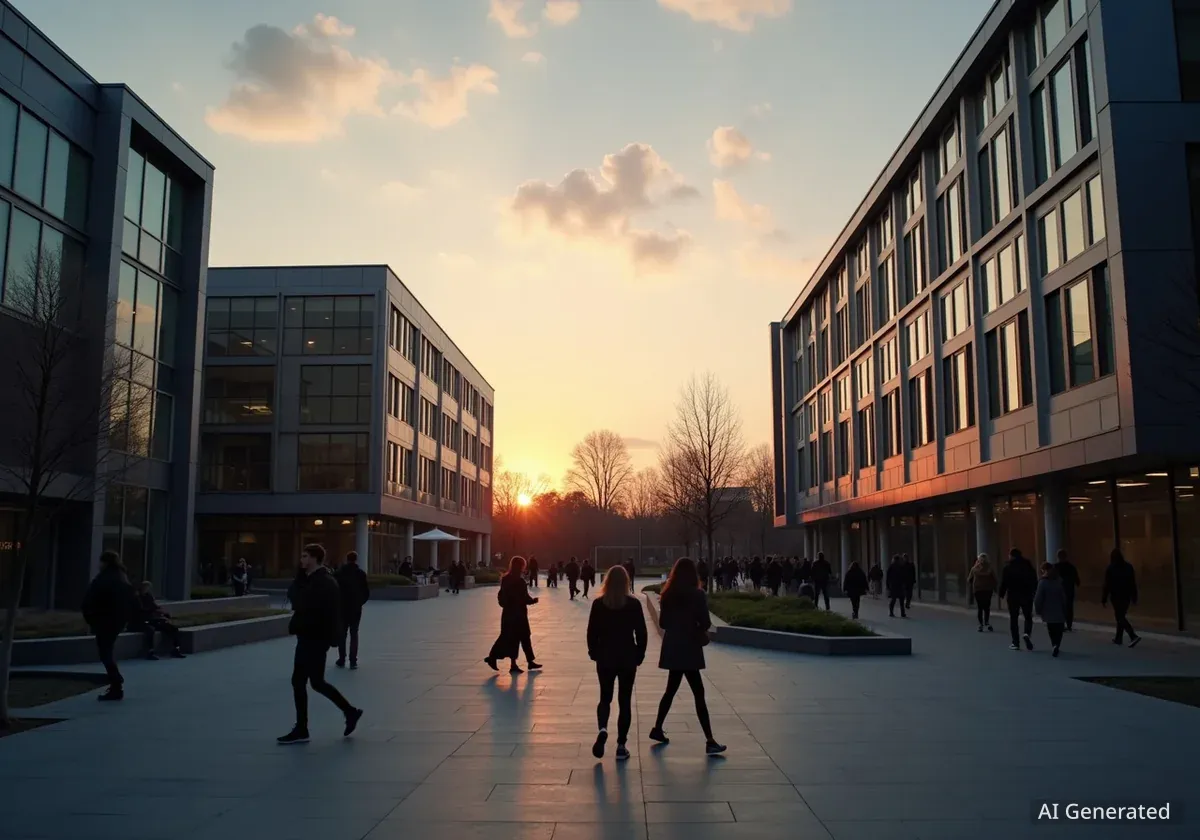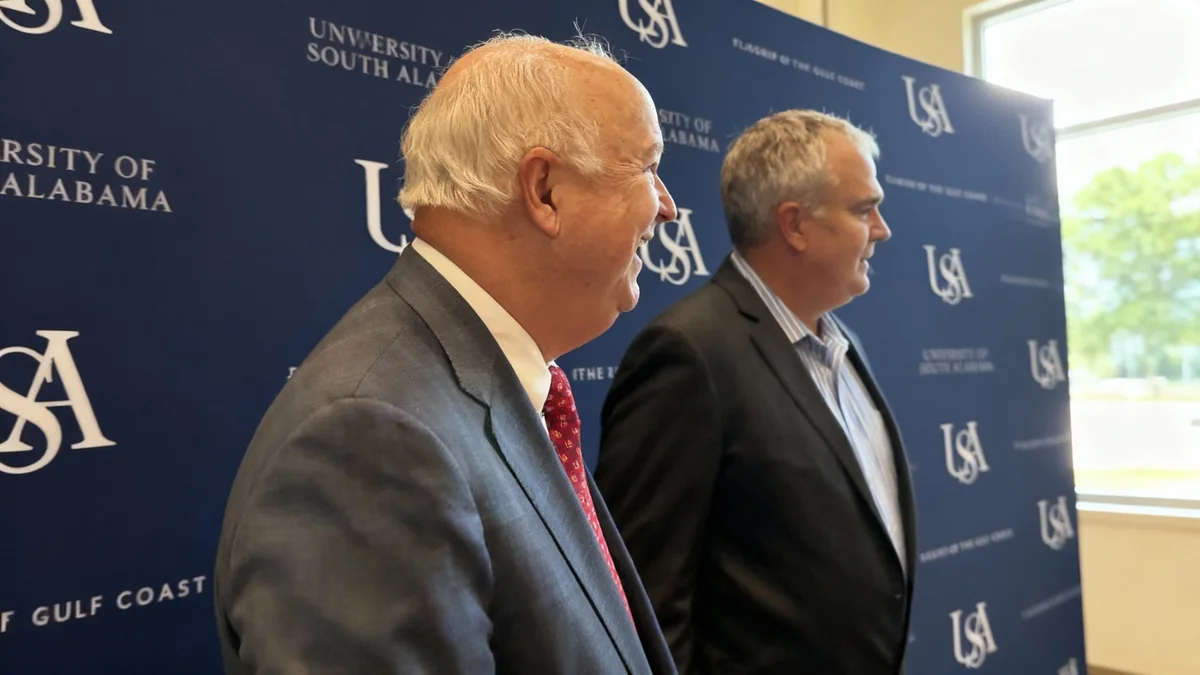Talladega College, a historically Black institution in rural Alabama, has sold four of its six famed Hale Woodruff murals to secure its financial future. The decision came after the college faced a severe budget shortfall, prompting leadership to leverage its most valuable assets to continue its educational mission.
The murals, painted in the early 1940s, are considered masterpieces of American art and depict pivotal moments in the African American journey to freedom. The sale to the Toledo Museum of Art and two foundations is estimated to be worth around $20 million, providing a critical lifeline for the institution.
Key Takeaways
- Talladega College, an HBCU, sold four of six historic murals by artist Hale Woodruff.
- The sale was prompted by a financial crisis in May 2024 that left the college unable to meet payroll.
- The buyers are the Toledo Museum of Art and two art foundations, with the deal estimated at $20 million.
- The murals are historically significant, depicting events like the Amistad mutiny and the Underground Railroad.
- College leadership views the sale as a necessary step to ensure the institution's long-term survival.
A Necessary Choice Amid Financial Strain
The decision to part with the treasured artworks was not made lightly. In May 2024, Talladega College confronted a stark reality: it did not have the funds to meet its payroll obligations for the month. This crisis highlighted the precarious financial position of the institution, which operates with a modest endowment of less than $5 million.
Rica Lewis-Payton, who became the board chair shortly before the crisis peaked, described the situation as urgent. A 1981 alumna of the college, Lewis-Payton explained that the board was forced to evaluate every available resource.
"We had to look at every asset that we have," Lewis-Payton stated, reflecting on the difficult period.
The Hale Woodruff murals, housed at the college for over 80 years, stood out as the most significant asset. The subsequent sale was the result of a careful and deliberate process aimed at transforming artistic capital into financial stability for generations of future students.
The Enduring Legacy of the Woodruff Murals
The six murals created by Hale Woodruff for Talladega College between 1939 and 1942 are more than just paintings; they are powerful historical documents. Woodruff, a prominent Black artist of his time, was commissioned to create works that would celebrate the struggle and triumphs of African Americans.
Who Was Hale Woodruff?
Hale Woodruff (1900-1980) was an influential artist and educator known for his murals, paintings, and prints. He played a key role in the Harlem Renaissance and is celebrated for his depictions of the African American experience. His work at Talladega is considered a cornerstone of his career.
The series captures themes of resistance, freedom, and interracial cooperation. Two of the most famous panels are "The Mutiny on the Amistad," a dynamic portrayal of enslaved Africans seizing control of a slave ship, and "The Underground Railroad," an emotional scene of Black and white allies working together to guide people to freedom in the North.
Art historians widely recognize the collection's importance. Barbara Haskell, a veteran curator at the Whitney Museum, described the murals as a monumental achievement in American art history.
"They are Woodruff’s crowning achievement, and among the best American murals," Haskell commented.
Their sale marks a significant moment, transferring these culturally vital works from their original home at an HBCU to a major public art museum and private foundations, where they will be accessible to a broader audience.
From Campus Walls to Public Galleries
Under the terms of the agreement, four of the six murals will now be owned by the Toledo Museum of Art and two affiliated art foundations. While Talladega College relinquishes ownership, the move ensures the long-term preservation and exhibition of the artworks.
Estimated Value: While the exact sale price remains undisclosed, art experts place the value of the transaction at approximately $20 million. This infusion of capital is transformative for a college with an endowment under $5 million.
The sale provides the college with the financial resources needed to not only stabilize its operations but also to invest in its academic programs, infrastructure, and student support services. For the leadership, it was a strategic decision to leverage a historical asset to build a sustainable future.
Lewis-Payton expressed confidence in the outcome, framing it as a responsible act of stewardship for the college's primary mission: education.
"It required deliberate thought and execution," she said. "I sit here today feeling good that we are leveraging this most prized possession in a way that will improve the ability of the college to provide a foundational education for people like me."
The Broader Challenge for HBCUs
Talladega College's situation is not unique. Many of the nation's Historically Black Colleges and Universities (HBCUs) have historically operated with significantly smaller endowments compared to their predominantly white counterparts. This financial disparity can create challenges in funding operations, maintaining facilities, and competing for students and faculty.
These institutions often hold valuable collections of art and historical artifacts, which can become critical resources in times of financial distress. The decision by Talladega highlights a difficult balancing act faced by many HBCUs: preserving cultural heritage while ensuring institutional survival.
The sale of the Woodruff murals serves as a powerful example of how these vital institutions are navigating modern economic pressures. By converting a static asset into active capital, Talladega College aims to strengthen its foundation and continue its 157-year-old legacy of educating African American students in the Deep South.





